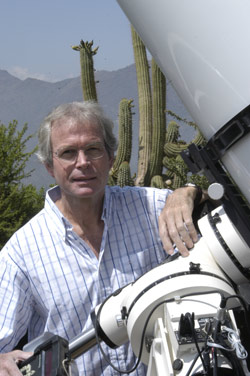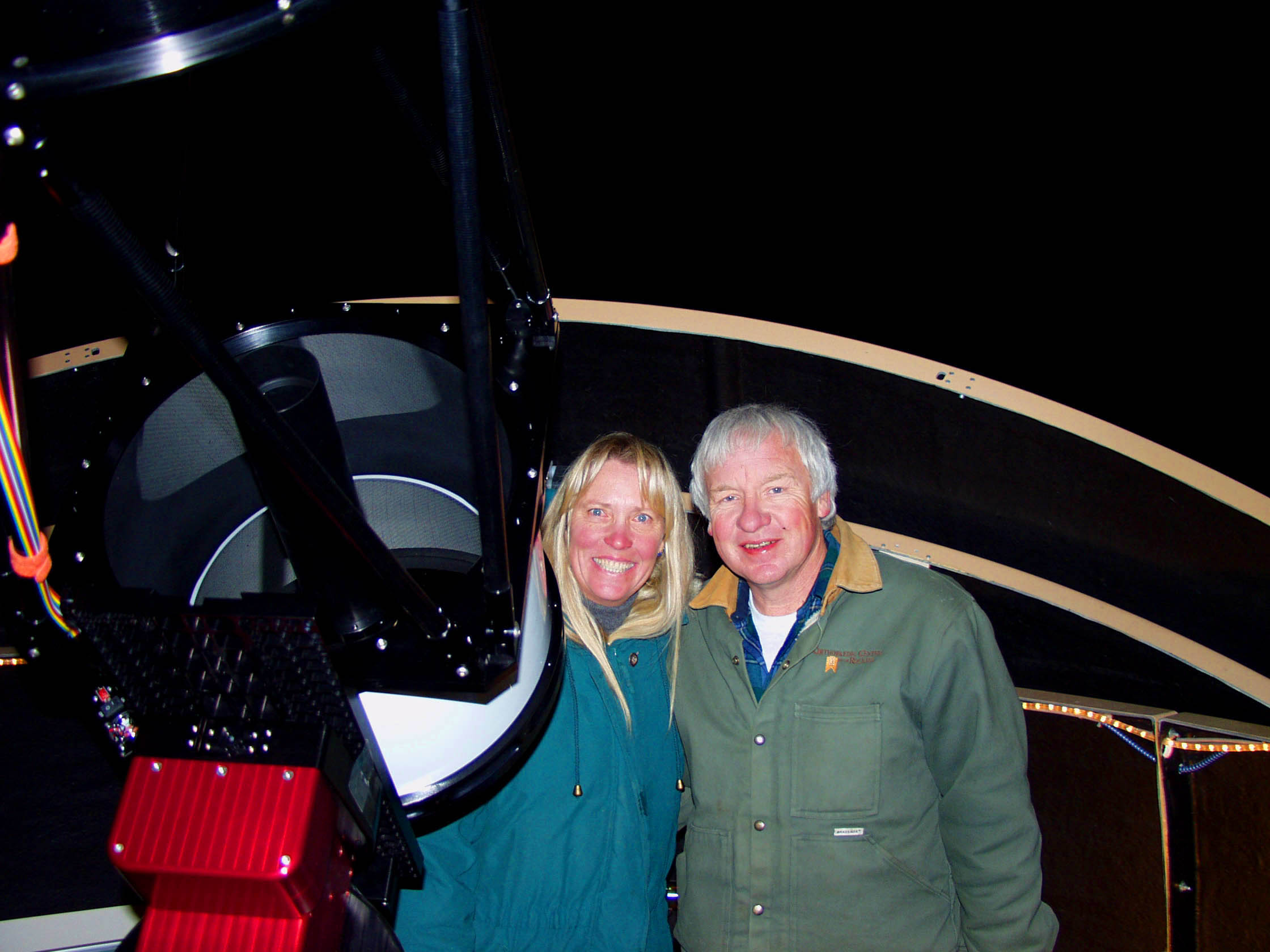SSRO Alumni
Steve Mandel

Steve Mandel has been an amateur astronomer since the age of 12, when he built his first telescope. In the early 1980's, he got hooked on photography and worked as a photographic stringer for Newsweek magazine. He then began taking pictures through the telescope and his first astronomical image was published in Sky & Telescope magazine in 1986. He has been imaging the universe since that time.
John Pierce

John Pierce is a co-founder of SSRO. Among other things, John has been called the "Planetary King" by his colleagues at SSRO. In addition to his amazing likeness to a mad scientist he actually plays the role of an Interventional Radiologist in New Hampshire. While not busy with his three children he tries to stay awake at night to image remotely in New Mexico, which is two hours behind his normal sleep cycle.
Jim Thibert
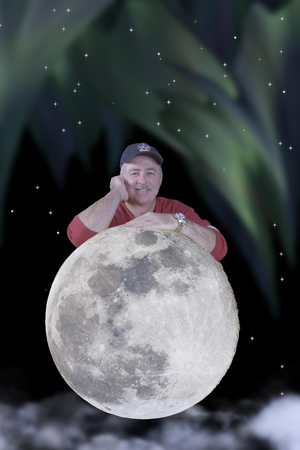
Jim Thibert is the Canadian content for our SSRO Team. He has been involved extensively in astronomy and predominantly astro-imaging for 8 years. He has his own website, http://www.forterieobservatory
Living in Fort Erie, just across the Niagara River from Buffalo New York, presents all sorts of seeing issues and light pollution issues.His Fort Erie observatory now houses a Takahashi EM200 with a tv101 and 80mm refractors and focuses those efforts on narrowband-widefield imaging.
Jim is maried to wife, Donalee and they enjoy travel worldwide, good wines, international politics and intelligent conversations.
Don Goldman

My name is Daniel Verschatse. I was born and raised in Flanders (Belgium).
When I was about 10 years old, fascination with the objects in the sky grabbed me for the first time. Initially I satisfied my curiosity with books. Then came the inevitable excursions into building a small telescope: first with simple lenses, then with a selfmade mirror. As a student in the sixties, I worked nights,week-ends and during summer recess to finance my first "real" telescope: a 102 mm (4") Polarex - Unitron achromatic refractor with a 75 mm (3") guidescope on a motor driven equatorial mount. This dearly remembered instrument gave me my first quality views of the moon and planets. It also enabled first excursions into astrophotography.
The imaging bug got me ! Together with a friend we were out every one of the rare clear nights, trying to record the objects on 35mm film. It was a long learning process eventually rewarded with the publication in Sky & Telescope of our Mercury solar transit picture in 1970 (July issue pages 20-21).
After graduating as a radio frequency engineer, I left my native Belgium to start a technical-commercial career that took me to a number of countries and left little room for my astronomical pastime. The interest never waned though and in the early nineties my old love for quality refractors and astrophotography was revived by the appearance of the new generation Astro-Physics telescopes: fast f-ratio, virtually colour-free imaging instruments. I was hooked again!
In 1999, my job brought me to Chile and I grabbed the opportunity to make a childhood dream come true: my own observatory under good skies! It saw first light in November 2001. After a rewarding re-start with film astrophotography, I quickly became a believer in CCD imaging technology. Nowadays, all of my work is CCD imaging.
Your suggestions, questions and comments are welcome. Please contact:
antilhueNOSPAM@NOSPAMadsl.tie.cl (please delete "NOSPAM" from this address)
Jose Joaquin Perez
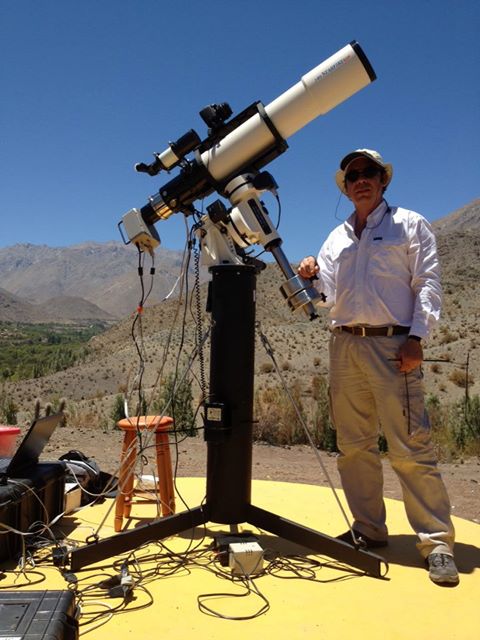
A recent member of the SSRO Team is a Chilean astronomer Jose Joaquin Perez. "I’ve been taken astrophotography over 10 years, but my fascination for the firmament goes back to my childhood, during the time I lived in the region of Coquimbo, Chile, owner of one of the most transparent and darkest skies on the planet. There I had the opportunity to lead for the first time a telescope to the sky at the “Tololito” observatory, belonging to the Seminario Conciliar of La Serena, and still today led by the priest Juan Bautista Picetti. This holy man had the patience to answer my endless questions for whole afternoons and gave me my first telescope: a refractor of about 3” f/12, with wooden tripod and two eyepieces. That instrument which I still keep, kept me in love with the phases of the moon, the rings of Saturn, the moons of Jupiter and the bright globular clusters in the Southern Hemisphere. replica uhren
Lewis Garrett
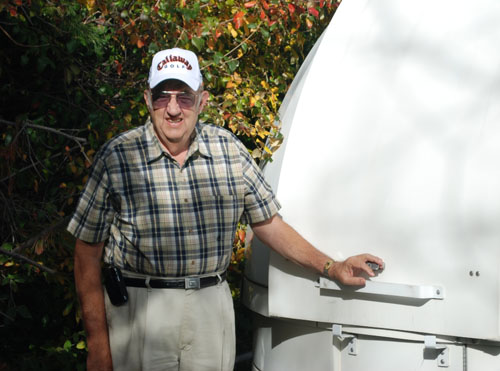
Besides a love for the beauties of the universe, I enjoy golf, amatuer radio, traveling, and skeet shooting. I also enjoy my family, we are up to about 30 give or take. My wife Shirley has stuck by me for 55 years. I'm a lucky guy.
(With sadness, we note that Lewis passed away in early 2015.)
Jacob Gerrittsen

Jacob is a 58 year old retired Dutch born internist from Camden, Maine who first fell in love with the night sky when he went on a field trip in 1976 to visit the telescopes on Mauna Kea on the island of Hawaii with his then girlfriend, now wife.
He ground his first mirror, a 6”, while working in the Bay Area, where a certain John Dobson taught him the finer points of grinding.
The next year he made a F/15 4” mirror that performed quite well as figuring wasn’t needed. He then bought the classic 8” Celestron, which he still owns.
Next came an 18” Dob 4 years ago and frustration at the lack of detail visible even through 18” at sea level. Since then he has become ever more obsessed with astro-photography. panerai replica
The past three years have been spent building a robotic roll-off observatory 10 miles from his house in Lincolnville at a fairly dark site.
The first year was wasted trying to get a Meade 14” RCX to work properly for astrophotography and he finally wised up and is now the proud recent owner of Doug George’s RCOS 12.5. He got incredibly lucky when an acquaintance donated a Paramount he had after reading about the observatory in the local papers.
He’s been a guest at the Kitt Peak Advanced Imaging course and a highlight was seeing M51 in amazing detail for the first time through a 20” RCOS.
When not imaging he loves to sail and is married with two grown sons.
Mike Smith
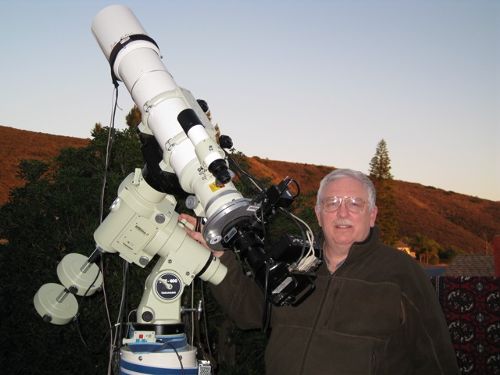
Mike Smith is a retired Navy doctor, working as an anesthesiologist in San Diego. He became interested in astronomy many years ago, starting with an ETX125. His daughter Bessie still uses this telescope. He went on to larger telescopes and better equipment. Along the way he tried astroimaging and became hooked on photographing objects in the sky he could not see. He does his imaging at home and in the desert east of San Diego. The pleasant weather and big city are not conducive to deep sky photography. Remote imaging offers the opportunity to use a larger telescope and to have darker skies than he can easily get to from home. Though still a novice at astrophotography, Mike is working hard to master this art.
Mike and his wife Elizabeth are avid pilots who enjoy traveling. Mike also enjoys scuba diving and all types of shooting.
Teri Smoot
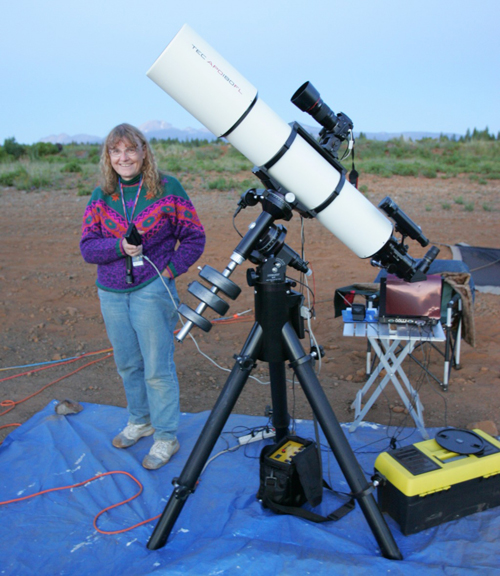
Teri lives in Placerville, a small city hallfway between Sacramento and Lake Tahoe in the Sierra foothills. She is a retired areospace engineer, and a docent at the Cameron Park Rotary Observatory, where she enjoys showing the people of Northern California the sights in the skies.
Teri has been involved in amateur astronomy for many years, but only became more active after her husband's retirement. She has done a large amount of imaging using a DSLR, and is now moving into remote imaging with CCD's.
When not imaging, Teri is a duplicate bridge player and enjoys travelling.
Jack Harvey
Jack lives on Coyote Rim Ranch in the Colorado mountains with his wife Gina. An observatory housing the Trubble Terrestrial Telescope is on the ranch, and is part of SkyNet. This is a project that automatically and remotely controls telescopes in and the USA to chase (GRBs). Once a GRB is detected by the orbiting NASA Swift Satellite, ground based telescopes are alerted to track and image the GRB. The SkyNet telescope network is also available for educational outreach purposes for high school and college projects.
This collaboration with Prof. Daniel Reichert (UNC-CH), director of SkyNet, led to the modification of one of the six science telescopes at CTIO to do both wide and narrow band imaging. SSRO-South was created upon culmination of a trip to Chile with the installation of the modifications to the telescope. Jack is a Visiting Scholar in the Department of Physics and Astronomy, University of North Carolina at Chapel Hill. Jack also works with the 1.23 meter telescope at Calar Alto, Spain through collaboration with Vicent Peris (DSA).
Rick Gilbert
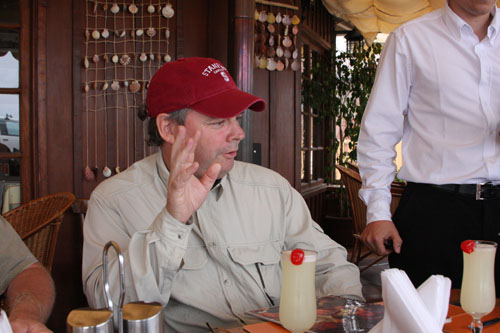
Rick is one of the four founding members of SSRO -- the others are Jack Harvey, Steve Mandel, and John Pierce. Although not currently imaging, Rick serves as the SSRO webmaster. Rick and Belinda have recently retired to East Hampton, New York where Rick spends his free time with his family or engaged in his other hobbies of books, antique telescopes, golf and tennis.
Steven Menaker
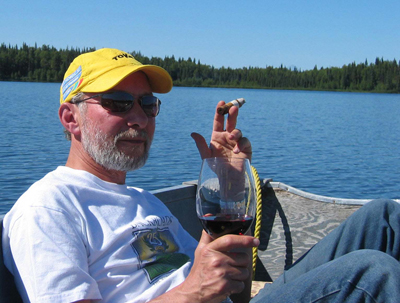
Steve is the Arctic representative of SSRO. He believes his interest in astronomy began at birth or shortly thereafter. He has built several telescopes including a 12” Cassegrain that he installed atop Ridge Winery near Palo Alto, California. He moved to Anchorage after completing surgical residency in 1976, where he met his wife, Joanna. In 1999 they added an observatory to their house to take advantage of Anchorage’s abominable seeing conditions, light pollution, and brief observing season.
Steve and Joanna enjoy cross-country skiing, mountain biking, and flying.
When their son, Eli, was an undergraduate at Middlebury College. He designed a 16-kilometer planet walk for the city of Anchorage, which was completed in September 2005.

